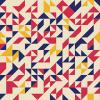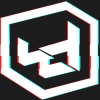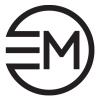Search the Community
Showing results for tags 'UX'.
-
After seeing quite a bit of demand for long shadows in Affinity Designer, I took it upon myself to throw together a basic tutorial to get you guys started with flat icon design in Affinity. My example isn't perfect, but it should be enough to get you going. You can view the tutorial here. Let me know what you guys think!
- 2 replies
-
- long shadows
- flat icon
-
(and 5 more)
Tagged with:
-
I am very interested in moving into Affinity permanently but so far I don't see any way to create symbols which can be edited as separate documents and then handled as self contained objects within a work document. This is critical to UI/UX work flow (a single change to a button can be instantly reflected in hundreds of documents) and can also be pretty useful for certain styles of illustration with repeating patterns. Dose Affinity handle this in its own way? If not is it on the roadmap to being implemented as a feature? In terms of this feature, it would be wonderful if these symbols can have many states - and each state can have property / behaviours added. In a best case situation this feature set I would be supporting the following: a symbol / object can have multiple states. each state is a separate page, each page has a properties panel to assign an action or variable. e.i. "click / swipe action trigger page [X]" or "if [variable x] is true / false trigger page [X]" symbols can be exported as SVG / PNG / GIF and each additional state is saved as a child file. e.i. button_X.png, button_X_focus.png, button_X_disable.png, button_X_hover.png symbols groups can be exported as an Axure RP library - this would be sooooo awesome but obviously difficult as the framework is very different in the Export Persona mode, symbols can be automatically spliced and placed into HTML for quick mockups
-
Observation: - Lots of items in Layers Panel - I dig down deep into a group tree, aiming to add eyebrow shapes to a head. - AD creates the new items at the top of Layers Panel. Have to scroll a mile up, and then drag them down to where I want them to be (in that head group I aimed to work in). It would be much more intuitive to place those shapes above the last selection before creation began. Perhaps there is already a way to do it? If so, how?
-
Hi! I really love almost everything about the affinity UI, it is an astoundingly nice piece of software to use with one exception. These dropdowns have a delay to become usable/visible. They take a tad long - and the time feels longer the bigger the widget. This hurts usability, especially when you have to pick a color 10 times in a row (or any repetition) - it stacks up real fast. As an adept user, I sometimes spend more time waiting for animations to finish then actually working. And more subjectively, they are animated with a scale effect, which I find personally a little tacky when surrounded by the other elegant design :) Feature Request Please add a settings panel (Preferences -> User Interface) to configure: - The pop up show speed/time (in ms for example) or: - Whether or not the widgets animate (that would implicitly lower the time) Since some people may love the effect, and it may have good reason to exist, having the option to speed it up as well as toggle it seems the best of both worlds. Thanks for the excellent software and keep up the good work.
-
I will make this quick. The default font for affinity designer doesn't look pleasing. I don't like how the panels look overall because on the top and left hand side the buttons are all rounded. This clashes with the hard corners the panels have and other buttons that are not rounded. The program is great though, I love it. Keep up the great work!
-
In my current workflow I seem to struggle with Affinity Photo compared to Adobe Photoshop: - pen tool selection and getting the path selection (CMD + click on layer?) - colour in general isn't clear to me. It's very hard and unnatural to me to get and add the colour I want for usage. - CMD or ALT + BACKSPACE for filling selection doesn't work - ALT + clicking for selecting the pipet tool for a quick colour reference? - select with the marquee tool and reposition its begin point while holding SPACEBAR? ps: Some shortcuts are different in Adobe Photoshop and I struggle each time, I hope to get used to them at some point...
-
Hi there, firstly, affinity Designer is simply amazing!! I do apologise for this question if it has already been answered, I did have a look through the pages and never saw it. I want to know if Affinity designer would ever have pre built in design templates for UI and Icon Design? I create a lot of iOS and Android icons and design user interfaces for mobile apps also, it would be super cool if Affinity had a preset iOS, Mac OS and Android icon template as well as standardised UI frameworks built in to speed up my design process. If this is not a feature to be considered, is it possible for me to create these frameworks myself and have them stored ready to use when I need them? Thanks
-
Please allow: 1) Dragging the FX of a layer to the Trash to remove all effects. 2) Dragging FX to another layer to move the effects to the other layer. 3) Opt+Dragging FX to another layer to copy effects to the other layer. Great work on the apps, group hug!
-
Hi There After using the New Affinity Photo i must say first of all..i am in love..:-) As a Interactive designer i start to think, How we can make the flow of our design work much more faster and simple to use that will also combine a system that will be close to the development system thinking and like this we can start to use design with the thinking of development user which can help at the end of our design. My Idea to add a simple tool which i can save with it, as i want, font style, colors, lines style. maybe to add to the font tool a place were i have 6 small buttons (H1 H2 H3 etc) and by clicking each one of them the system know to keep it and to spread it over my project. Flow example: i open a new file and start to design a web page. now i start to add titles, content, images, icons etc. to all my biggest titles i press H1 button and it keeps it as a style. then i choose a color palette and save it to the same folder my font style goes, at the end i will have a file that each time i will import it to one of my projects it will change automatically all the assets into this style file ( fonts, colors, even windows arrangements..) finally, when i will finish my design, i will be able to export this file to a CSS or XML file and will send it to my Develop team, and Voualla, they have all my Guidelines and style guide in one file/folder.. thoughts?? Best Regards..
-
(not a feature, a simple change) I LOVED that affinity assumes you don't want to screw with typography during transforms, so that shift isn't required to constrain XY during transform. But then it blows that by being inconsistent on shape or curve transforms, which does my head in. This would be a simple change to make consistent across the board, and I can't see any good reason to not. Thanks again for this great app.
-
Hi, I've been trying out the demo version for a couple of days and wanted to applaud the team for a truly impressive effort in trying to bring the best of both (vector and raster) worlds. At the same time I couldn't help but feel greatly underwhelmed by user experience of Affinity Designer and would like to mention a few points and see both how users and the team feel about that. In short, I think by trying to so closely copy the UI of Illustrator and Photoshop, Affinity Designer is missing a fantastic opportunity to start fresh and IMPROVE on these programs. Great success of programs like Sketch show that users may not necessarily want *cheap* Adobe products, they want *new* kind of products that better adopt to their particular workflows. Hence I will use Sketch for example of what I'd call workflow-based UI and Illustrator and Photoshop as feature-based UI. Photoshop and Illustrator have evolved over decades and over 20 iterations, and with this long history comes a huge baggage of legacy where early GUI decisions need to be carried over from early versions for the sake of consistency (people generally don't like change if they are used to one way of doing things). Also each new version meant bunch of new features that kept piling up and needed to be squeezed into existing UI paradigm of panels and toolbars, and hence the product that is based around features is created, with each iteration being more powerful but also feeling slightly ever more bloated. By "bloated" I mean that everyone, especially creative people, want as little friction from the tools they use. Obviously one way to remove friction is to repeatedly use the product, but for example, even after using Photoshop for almost 20 years I still often cringe by the way I constantly need to shuffle between different panels, and toolbars: even if I can customize their position and what not, I am still forced to break my workflow in order to rearrange some panel, or click a certain button to open a subpanel with more options. In order to solve the problem of cramped UI Adobe has introduced, years ago, concept of Workspaces, which is kinda like GUI on top of the GUI, and while it does help ease the problem, Workspaces is a duct-tape patch and not a true solution, which is quite understandable given the size and legacy of a huge program like Photoshop (or Illustrator, or even worse example: Autodesk programs like AutoCAD and Max - compared to Autodesk's miserable efforts of managing feature bloat, Adobe is doing an excellent job!). On the other hand, a new program has opportunity to approach UI from different angle, and programs like Sketch (or similarly named Sketch Up, to continue analogy to Autodesk competitors) tried to focus on concrete task that user wants to perform and build a flexible dynamically changing UI around these tasks, rather than to simply group buttons into panels based on features. Now obviously it is ridiculous to compare Sketch to Photoshop, as it is a niche program that caters to specific target market and specific workflows (GUI design only), but there are a lot of lessons to be learned on how friction between the idea and the tool can be organically reduced if you start from clean slate and not by copying software behemots with over 20 years of GUI legacy: 1) Edit everything in-place to give more hands-on control over the effect. Example is the way Sketch gradients are edited directly on the object, vs. having to do it in a dedicated UI element separated from object. 2) UI adopts intuitively to users logical next action. You don't need to switch tools or modes if it's obvious what you will do next. For example: - one click at the object selects it and automatically turns into Transform mode. Double click will automatically turn into path editing (moving anchors around). - when you have a line selected and click on an anchor or bezier handle, you will automatically get into edit mode in Sketch because obviously direct click on a handle of a selected object means you want to move it around. Iin Affinity, you will stay in your present tool which means you are likely to start creating another line instead (althout there is a misleading PEN- pointer that leads to think that the following action will be anchor deleting). 3) Don't float feature-based panels around, but use several fixed positions for GUI. If you follow point 2) this means that GUI will adopt to what you do and you always intuitively always need to move your attention to the same part of screen when wanting to perform complex tasks. Another Sketch example is Inspector (a paradigm widely used by Apple products) which is a sole UI element that always adopts to whatever you are doing at the moment. So I know that whatever I plan to do, I only need to look to the right side of the screen and I will always have a RELEVANT tool set. 4) Modular and consistent functionality. By modular I mean the way different types of fills can be stacked one on top of another in Sketch, and controlled via extremely simple but powerful interface. Another excellent example of modular pproach is the concept of Modifiers in 3D Max, where you can basically start from a simple 3D cube and end up with a human figure just by applying a range of non-destructive modifiers (and a bit of skillful positioning of the points) and at any moment you can always go back to any step and modify it in a non destructive manner. By consistent I mean things like Styles which are common place in software packages to ensure consistency. Ok, hm... I'm sorry it's getting late here (2:30am) so I am starting to lose focus here. Back to the core point: I understand Affinity is going after Adobe users, but that really doesn't mean that all we want is cheap Illustrator + Photoshop. You can do much better by trying to approach the functionality from a new fresh perspective and I can assure you will get a faithful user base much easier by doing NEW thing than trying to copy everything 1:1 - because you know, making another Photoshop AND Illustrator in one software piece from scratch is HUGE amount of work. And people will ALWAYS keep comparing Affinity to Illustrator and Photoshop and be kinda pissed off because feature XYZ is misssing. By starting fresh, you can focus your efforts and be more effective in solving user problems with less actual work. Plus, don't underestimate your potential users: if you do things with fresh perspective, it may take us a bit of learning curve to get used to your product, but if early on we figure out that we are seeing a new better way of doing things, most of us will gladly spend some time to learn and adopt. Case in point: I liked Affinity demo very much, but it doesn't really solve anything that my Photoshop and Illustrator CS4 don't do (except dang retina screen support). Even if it's feature packed, and cheap, there is not very much incentive for me to buy, as it feels just too familiar to these two packages. Maybe I am minority here, but really would like to hear what other users thing on this. Good night :) N.
-
Hi, I've just had a short glimpse at the trial but these things would make this tool great for UI design (forget Sketch because of performance): Paragraph and character styles Automatic style updating or some easy-to-use alternative Different artboards in one view to design flows Easy-to-use symbols to complement the outsourced embedded files In the help it says: Am I missing something or text attributes are not part of styles? Please include this on the roadmap and the tool will finally destroy Adobe :P.









